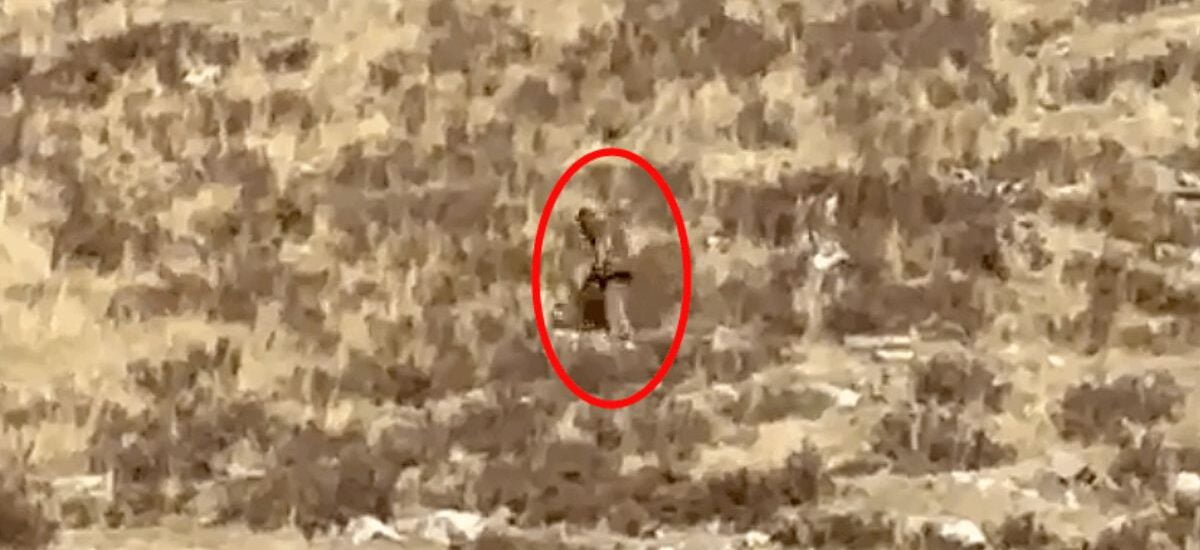The legend of Bigfoot, also known as Sasquatch, has captured the imagination of people around the world for centuries. These elusive and mysterious creatures, often described as large, hairy, human-like beings, have left an indelible mark on folklore and pop culture.
Table of Contents
In this article, we will delve into the rich history of Bigfoot sightings, explore their reported physical characteristics, discuss how to identify a Bigfoot, highlight a recent, compelling sighting caught on camera, and even consider the possible genetic relation between humans and Bigfoot.
Historical Accounts of Bigfoot
The history of Bigfoot sightings goes back beyond recorded history and spans various cultures globally. North America, especially the Pacific Northwest, is well-known for tales of these seven-foot-tall, hairy forest dwellers. Indigenous cultures, European wild man legends, and regional folk tales all contributed to the mythology of Bigfoot. As early as the late 1800s and into the 1900s, North American settlers reported encounters, footprints, and even grainy photographs of these elusive creatures, further fueling the mystery. Some indigenous cultures have their own legends of mysterious, hair-covered creatures living in forests, with differences in details among regions and communities.
One notable incident was the Ape Canyon incident in 1924 when gold prospectors claimed to have encountered “ape-men” near Mount St. Helens. While it was investigated and deemed likely a fabrication, it remains a significant piece of Bigfoot folklore.
Physical Qualities of Bigfoot
Descriptions of Bigfoot vary, but common characteristics include a large, muscular, bipedal, and hair-covered creature. They are often described as being black, dark brown, or dark reddish in color. Height estimates range from 6 to 9 feet, with some sightings suggesting even taller beings up to 10 to 15 feet. Some observers describe them as more human than ape, particularly regarding their facial features.
Notably, Bigfoot sightings often include broad shoulders, no visible neck, and long arms. However, skeptics argue that these characteristics can sometimes be attributed to misidentifications of bears standing upright. In some accounts, people report glowing yellow or red eyes, although this is not a trait found in humans or any known great apes.
Identifying a Bigfoot
Identifying a Bigfoot can be challenging, as sightings are often fleeting and sometimes occur in poor lighting conditions. Key indicators include the creature’s large size, bipedal stance, hair-covered body, and distinctive footprints. Footprints attributed to Bigfoot can be as large as 24 inches long and 8 inches wide. Some prints even feature claw marks, which have led scientists to conclude they likely come from known animals, such as bears.
Eyewitnesses often report their distinctive smell. Michael Rugg, owner of the Bigfoot Discovery Museum, described it as a foul odor, akin to a skunk that had rolled around in dead animals and garbage.
Recent Sighting Captured on Camera
A recent and compelling Bigfoot sighting was captured on camera by a couple during their train ride from Durango to Silverton, Colorado. Shannon and Stetson Parker were on their tenth-anniversary trip when they spotted a large, bipedal figure moving across the mountainside. The video footage shows the creature squatting down among the mountain sage.
The Parkers described the creature as at least six to seven feet tall, well-camouflaged, and matching its surroundings. The train’s conductor also shared similar experiences of encountering unexplainable things in the area.
Possible Genetic Relation with Humans
The question of a genetic relation between humans and Bigfoot remains a subject of debate and speculation. Some enthusiasts and researchers have postulated that Bigfoot could be a distant, undiscovered relative of humans. This theory hinges on their reported humanoid appearance and the shared genetic heritage among primates. However, the lack of concrete evidence makes it difficult to draw definitive conclusions about this possible connection.

Social Media and Bigfoot Enthusiasts
Bigfoot sightings often generate buzz on social media platforms. For instance, the recent sighting by the Parkers was shared on Facebook, where reactions were mixed. While some users expressed their belief in the existence of Bigfoot, others remained skeptical and posed questions about the sighting.
On Sunday, October 8, 2023, a recent Bigfoot sighting took place during a journey on the Narrow Gauge train ride from Durango to Silverton, Colorado. The eyewitnesses, Shannon Parker and Stetson Tyler, were on a picturesque trip, hoping to spot elk in the mountainous terrain. As they were making their way back from Silverton to Durango, Stetson noticed movement in the mountains and exclaimed that he believed it to be Bigfoot. Their fellow passenger, Brandon, quickly captured the moment on his phone, while Shannon attempted to snap a photo with her camera. This intriguing encounter was witnessed by only a handful of individuals out of the hundreds on the train, reigniting the debate over the existence of the elusive creature.
Mysterious Beings Across Cultures
Bigfoot, known by various names in different cultures and countries, shares similarities with similar cryptid creatures from around the world. Here are some comparisons to Bigfoot-like creatures in various cultures and countries:
- Sasquatch (Canada): Sasquatch is often considered synonymous with Bigfoot, and the name is commonly used in Canada’s Pacific Northwest. Both creatures share similar physical characteristics and behaviors, and sightings are reported in British Columbia and other Canadian provinces.
- Yeti (Himalayas, Nepal, Tibet): The Yeti, also known as the “Abominable Snowman,” is a legendary ape-like creature said to inhabit the high mountain ranges of the Himalayas. Like Bigfoot, the Yeti is often described as large, hairy, and bipedal. While the environments differ, the physical characteristics and elusive nature of the creatures are similar.
- Yowie (Australia): The Yowie is the Australian equivalent of Bigfoot, often described as a large, hairy hominid inhabiting the dense forests and remote areas of Australia. Yowie sightings share many similarities with Bigfoot encounters, including large footprints and elusive behavior.
- Skunk Ape (Southern United States): The Skunk Ape is a regional variant of Bigfoot reported in the southeastern United States, particularly in Florida. It shares many characteristics with Bigfoot, but the name “Skunk Ape” derives from the foul odor often associated with these sightings.
- Almas (Central Asia): In the central Asian countries of Kazakhstan and Mongolia, legends of the Almas persist. These creatures are described as human-like, covered in hair, and are said to inhabit the remote mountain regions. They bear similarities to both Bigfoot and the Yeti.
- Mapinguari (South America): In the Amazon rainforest, stories of the Mapinguari circulate. This creature is often described as a large, ape-like being with backward-facing feet and a gaping mouth on its stomach. While there are differences in physical descriptions, the notion of an unknown, large, and cryptic creature resonates with Bigfoot folklore.
- Orang Pendek (Indonesia): The Orang Pendek is a cryptid creature reported on the Indonesian island of Sumatra. It is typically described as a short, human-like hominid. While it differs in size from Bigfoot, the Orang Pendek is a parallel example of an elusive, ape-like creature in a specific region.
- Chaneques (Mexico): In Mexican folklore, the Chaneques are forest-dwelling, small humanoid creatures. While they are smaller than Bigfoot, the Chaneques share similarities in their elusive nature and association with wilderness.
- Yeren (China): The Yeren is often referred to as the “Chinese Wildman.” It is described as a large, hair-covered creature inhabiting remote areas of China. The Yeren shares similarities with both Bigfoot and the Yeti.
Read More: October 14 Annular Eclipse: ‘Ring Of Fire’ Visible In America
Read More: Solar Storm In 2023: Are We Headed For An Internet Apocalypse ?
Read More: Breakthrough 2023: LK-99 World’s First Room Temperature Superconductor Achieved
Read More: Top 10 Kitchen Gadgets On Amazon In 2023! Every Kitchen Chef Must Have!
Read More: Aditya L1 Launch Soars To The Skies: India’s Remarkable Solar Mission Takes Flight






